From inside (document excerpt):
Commercial Products Aftercut Appearance Troubleshooting Guide PART NO. 00076SL (Rev. A) This page is intentionally blank. Table of Contents Using This Guide . 2 Turf Conditions 2 Cutting Units 2 Troubleshooting . 3 Bobbing . 4 Clip Marks 5 Grain 1 Mismatch – Angled . 7 Mismatch – Multiple Cutting Units 8 Mismatch – Ridge . 9 Mismatch – Straight 10 Overlap Marks . 11 Scalping . 12 Stragglers 13 Streaks 14 Tire Track 15 Uneven Dispersion 16 TORO® Service Training Using This Guide This document is designed as a troubleshooting guide to assist you in correcting aftercut appearance issues.
Lawn Mowing User Manual Free Download. Power Lawn Mower Free Instruction Manual Download PDF.
The following Toro® documents were used to compile the information in this guide: · · A Guide to Evaluating Reel Mower Performance and Using the TurfEvaluatorTM Reel Mowing Terminology We highly recommended familiarizing yourself with these helpful and informative tools. Interchangeable terms are often used to describe various conditions. This publication will help to clarify and standardize the use of these terms and the conditions they reference. Turf Conditions Turf conditions play a dramatic role in the aftercut appearance. Consider turf conditions before attempting to fix a problem by adjusting your equipment. Equipment used strictly for mowing cannot remedy turf conditions but may be able to be adapted to a given turf condition. The goal of turf equipment service personnel is to be in partnership with the turf grass manager to address appearance concerns by matching the equipment to current conditions. Most solutions are typically a combination of turf remedies and machine adjustments. Turf is a living breathing organism and the same “fix ” will not work for every turf condition and may not work for seemingly identical conditions. Warm and cool season grasses have different requirements and the cutting unit must be setup for the grass type and seasonal differences. Cutting Units A cutting unit incorrectly set up can cause more problems than resolutions. All cutting units must be checked and corrected to be the same for the following items: · Adjusters, Pivots, Bushings and Compensating Springs: Lubricate if necessary, ensure tightness and good working order · · Bedknife: Correct for the application with sharp, flat and straight cutting edge Bedknife Attitude: Set to manufacturer recommendations Bedknife Contact: Set properly according to manufacturer recommendations Reel: Maintain a sharp cutting edge (relief or backgrind recommended) with less than .002 (0.05mm) run out. Always refer to manufacturer’s recommendations. Reel Bearings: Inspect for good condition with no end-play and proper adjustment Reel Diameter: Meets or exceeds the manufacturer recommended minimum diameter Rollers: Parallel to the reel and each other (see operators manual) Roller condition: Bearings should have no end-play, surface run out should be less than .015 (0.38mm) and centered in the frame. Always refer to manufacturers recommendations. H.O.C. (Height of Cut): set to obtain the correct effective height of cut Wear factors: Must be equal wear to eliminate differences. For instance, a new part on one unit and the same worn part on another unit can create issues. · · TORO® Service Training Troubleshooting When addressing aftercut appearance issues you may need to make physical changes to components of the cutting unit or traction unit. Use a systematic and scientific approach to troubleshooting issues in a timely and effective manner. Make only one change at a time and take careful notes of the result before making additional changes or adjustments (allow time for analysis), to isolate issues and determine possible corrective actions. Begin by following these actions: · Define the issue by asking questions and making personal observations. The issue must be clearly defined before you can begin to correctly address it. · Evaluate turf conditions for their contribution to the outcome (include weather trends such as extreme wet or dry and recent turf maintenance such as top dressing, etc.). · Verify the traction unit is operating properly and in good condition (no switches jumped, proper RPM, maintenance is up to date, etc).
Wikipedia’s page for Toro Company
Company Web Site: www.toro.com


 Toro Commercial Products Aftercut Appearance Troubleshooting Guide 00076SL Rev A - 1 of 20
Toro Commercial Products Aftercut Appearance Troubleshooting Guide 00076SL Rev A - 1 of 20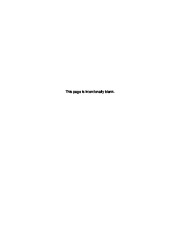 Toro Commercial Products Aftercut Appearance Troubleshooting Guide 00076SL Rev A - 2 of 20
Toro Commercial Products Aftercut Appearance Troubleshooting Guide 00076SL Rev A - 2 of 20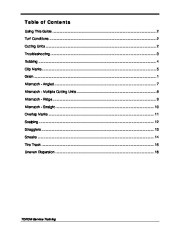 Toro Commercial Products Aftercut Appearance Troubleshooting Guide 00076SL Rev A - 3 of 20
Toro Commercial Products Aftercut Appearance Troubleshooting Guide 00076SL Rev A - 3 of 20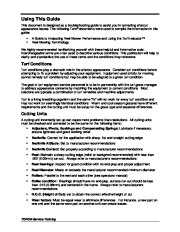 Toro Commercial Products Aftercut Appearance Troubleshooting Guide 00076SL Rev A - 4 of 20
Toro Commercial Products Aftercut Appearance Troubleshooting Guide 00076SL Rev A - 4 of 20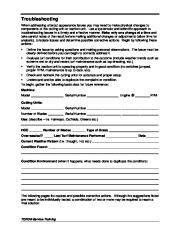 Toro Commercial Products Aftercut Appearance Troubleshooting Guide 00076SL Rev A - 5 of 20
Toro Commercial Products Aftercut Appearance Troubleshooting Guide 00076SL Rev A - 5 of 20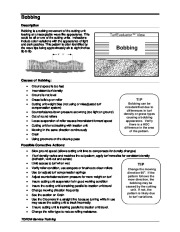 Toro Commercial Products Aftercut Appearance Troubleshooting Guide 00076SL Rev A - 6 of 20
Toro Commercial Products Aftercut Appearance Troubleshooting Guide 00076SL Rev A - 6 of 20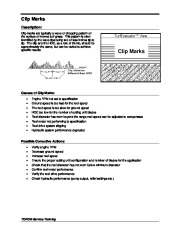 Toro Commercial Products Aftercut Appearance Troubleshooting Guide 00076SL Rev A - 7 of 20
Toro Commercial Products Aftercut Appearance Troubleshooting Guide 00076SL Rev A - 7 of 20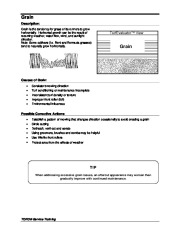 Toro Commercial Products Aftercut Appearance Troubleshooting Guide 00076SL Rev A - 8 of 20
Toro Commercial Products Aftercut Appearance Troubleshooting Guide 00076SL Rev A - 8 of 20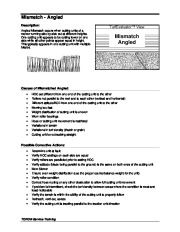 Toro Commercial Products Aftercut Appearance Troubleshooting Guide 00076SL Rev A - 9 of 20
Toro Commercial Products Aftercut Appearance Troubleshooting Guide 00076SL Rev A - 9 of 20 Toro Commercial Products Aftercut Appearance Troubleshooting Guide 00076SL Rev A - 10 of 20
Toro Commercial Products Aftercut Appearance Troubleshooting Guide 00076SL Rev A - 10 of 20